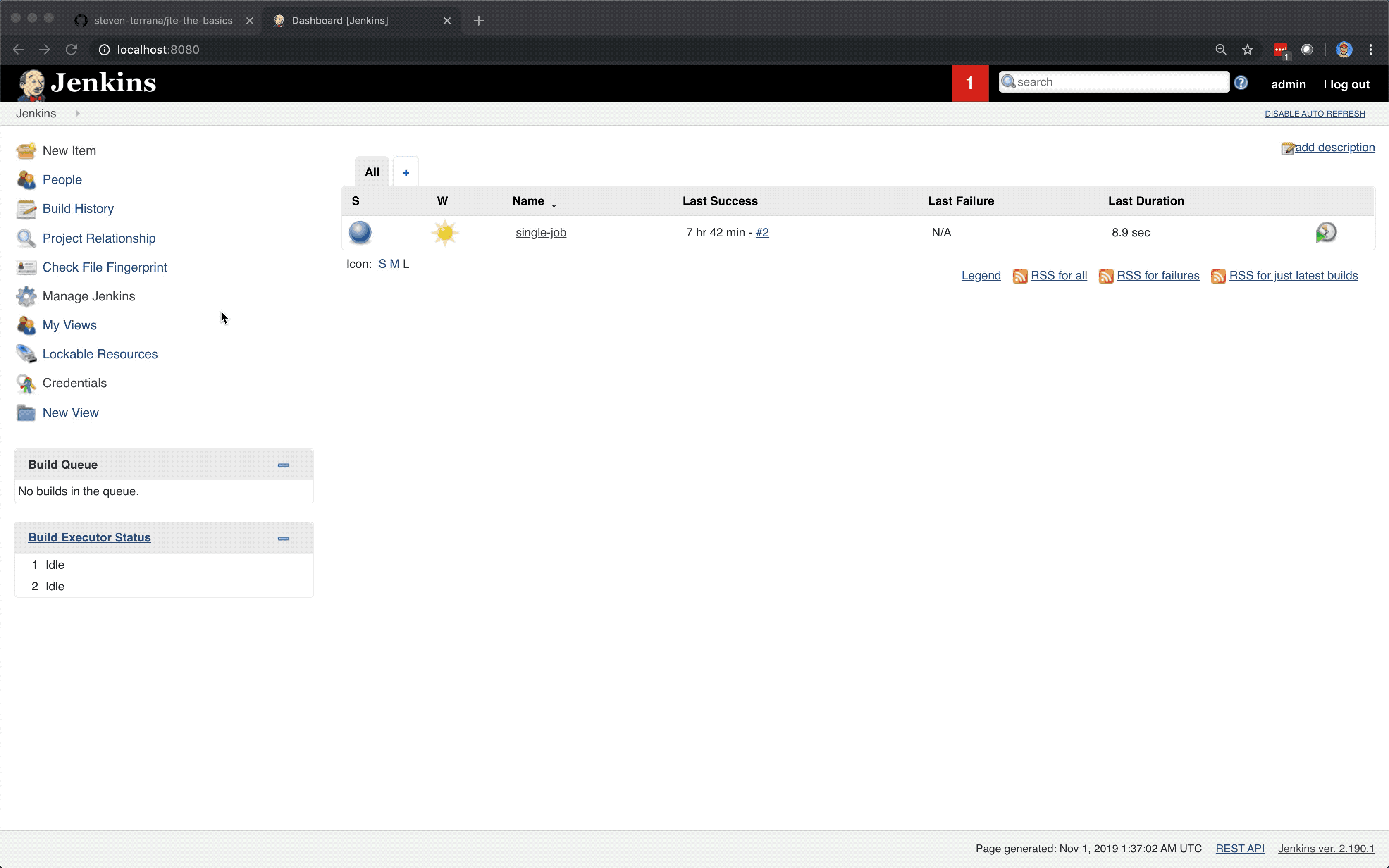Create the Libraries
In the previous section we created a pipeline template that invoked build() and static_code_analysis() steps.
In this part of the lab, we’re going to create libraries for these steps to implement them in our template.
Create a GitHub Repository
Libraries can either be packaged into a separate plugin for distribution or fetched directly from a source code management repository.
Retrieving libraries from a repository is the most common way of storing pipeline libraries for integration with the Jenkins Templating Engine (JTE).
Go ahead and create a new GitHub repository. It can be named whatever you like, though jte-the-basics would make sense.
Create the Libraries
Create the following directory structure within your repository:
.
└── libraries
├── maven
│ └── steps
│ └── build.groovy
└── sonarqube
└── steps
└── static_code_analysis.groovy|
When configuring this repository as a Library Source for JTE in Jenkins, you will be able to configure the base directory. Since there might be other sources in this repository in the future, all of the libraries we create will be stored in the |
It is important to understand that a library in JTE is just a directory, likely in a source code repository, that contains a steps directory with groovy files. When a library is loaded, each groovy file in the library’s steps directory will become a step named after the base filename.
Implement the Steps
In this lab, we’re just getting accustomed to the Jenkins Templating Engine and how it works. So the implementation of the steps for this lab will just be print statements that show where the step is coming from.
Generally, the most idiomatic way to define a step is to create a call method that takes no input parameters.
|
In future labs, we’ll learn how to pass information to our steps through the pipeline configuration file. |
void call(){
stage("Maven: Build"){
println "build from the maven library"
}
}void call(){
stage("SonarQube: Static Code Analysis"){
println "static code analysis from the sonarqube library"
}
}Configure the Library Source
Now that we have a GitHub repository containing pipeline libraries, we have to tell JTE where to find them.
This is done by configuring a Library Source in Jenkins.
|
You can define as many Library Sources as you need. They can be defined globally for the entire Jenkins instance in |
To make our libraries accessible to every job configured to use JTE on the Jenkins instace:
-
In the lefthand navigation menu, click
Manage Jenkins -
Select the first option,
Configure System -
Scroll down to the
Jenkins Templating Engineconfiguration section -
Click
AddunderLibrary Sources— do not edit thePipeline Configurationsection -
Ensure the
Library Provideris set toFrom SCM -
Select
Gitas theSCMtype -
Enter the https repository URL
-
In the
Credentialsdrop down menu, select the github credential created during the prerequisites -
Enter
librariesin theBase Directorytext box -
Click
Save

